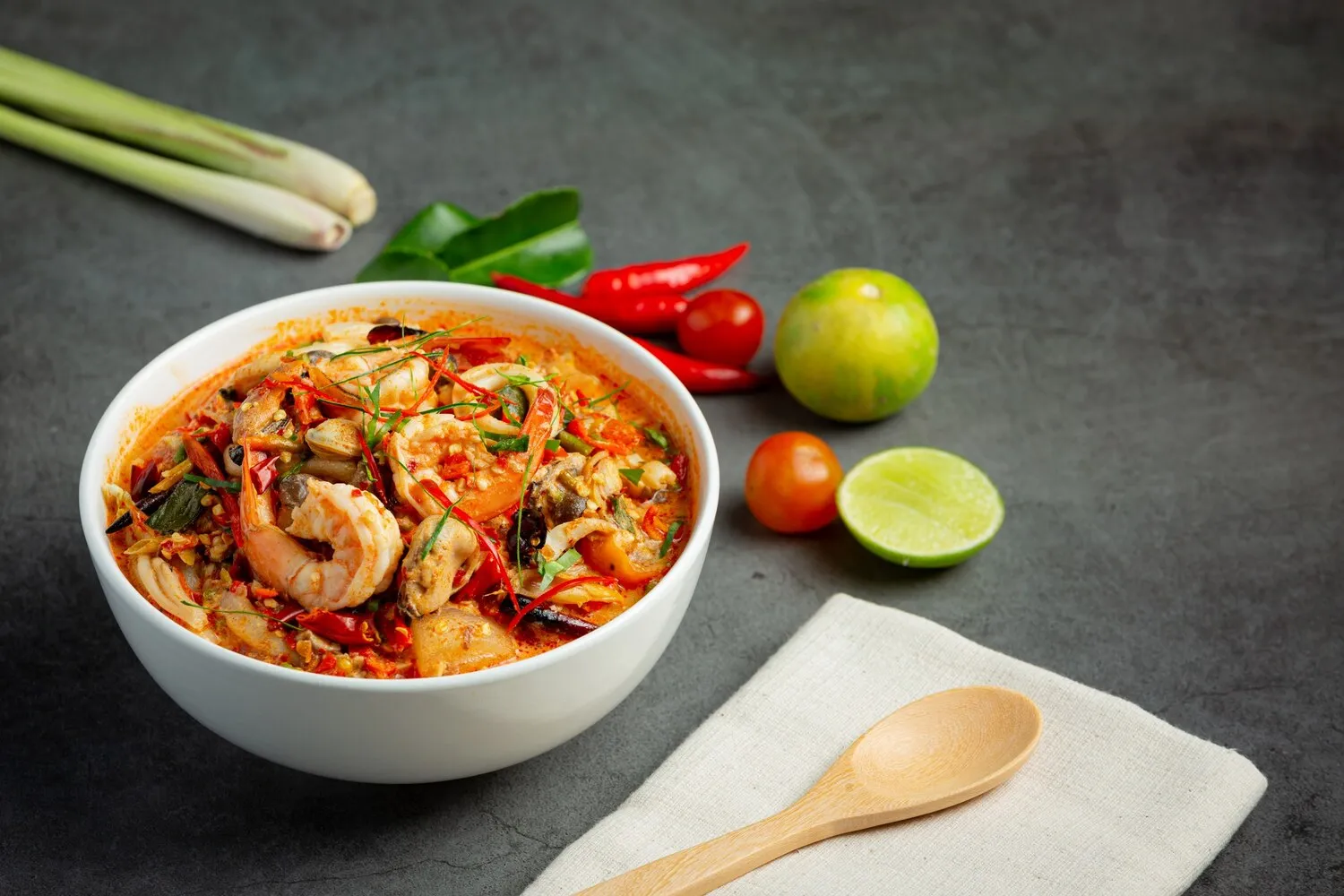
Homemade Soup
Rotating selection of homemade soups.
Nutrition Facts
* The % Daily Value (DV) tells you how much a nutrient in a serving of food contributes to a daily diet. 2,000 calories a day is used for general nutrition advice.
Soup has been a staple food for millennia, evolving from simple broths cooked over open fires to complex and diverse recipes utilizing a vast array of ingredients. Different cultures around the world developed their unique soup traditions based on locally available ingredients and culinary techniques. The 'rotating selection' concept reflects a modern adaptation catering to seasonal ingredients and diverse tastes.
Soup holds a significant place in many cultures, often representing comfort, nourishment, and togetherness. It is a dish frequently associated with home, family, and tradition.
Comfort Food
Soup is universally recognized as a comforting and soothing food, often consumed when feeling ill or in need of emotional support.
Family Meal
Soup is often prepared in large batches and shared among family members, fostering a sense of connection and community.
Regional Variations
Every region and culture boasts its own unique soup recipes, reflecting local ingredients and culinary traditions. These variations showcase the diversity and adaptability of soup as a dish.
Seasonal Adaptation
The rotating selection of homemade soups highlights the adaptation of soup recipes to utilize fresh, seasonal ingredients, enhancing flavor and promoting sustainable eating habits.
The flavors of homemade soup are incredibly diverse, depending on the ingredients used. They generally offer a comforting and savory experience, with potential for sweet, spicy, sour, or umami notes based on the specific recipe.
Homemade soups often feature a balanced combination of flavors. Vegetables contribute sweetness and earthiness, while meats or beans add richness and protein. Herbs and spices introduce aromatic complexity. Broth, typically made from bones, vegetables, or meat, provides a flavorful base. Acidity from tomatoes or lemon juice can brighten the overall flavor. Common flavor profiles include: hearty vegetable, creamy tomato, spicy chili, tangy borscht, and rich chicken noodle.
Build Flavor in Layers
Start by sautéing aromatic vegetables like onions, garlic, and celery to create a flavorful base. Add herbs and spices early to allow their flavors to infuse into the broth.
Use Fresh Ingredients
Fresh vegetables, herbs, and spices will significantly enhance the flavor of your soup. Opt for seasonal ingredients whenever possible.
Simmer, Don't Boil
Simmering allows the flavors to meld together gently, resulting in a richer and more complex soup. Avoid boiling, which can make the ingredients tough.
Taste and Adjust Seasoning
Continuously taste and adjust the seasoning throughout the cooking process. Salt, pepper, and acidity (lemon juice or vinegar) can significantly impact the final flavor.
Add Noodles/Grains Last
If your soup contains noodles or grains, add them towards the end of the cooking process to prevent them from becoming overcooked and mushy.
Explore additional Soup dishes and restaurants
Explore SoupDiscover top dining spots and culinary experiences in Aberdeenshire.
Explore AberdeenshireLearn more about the food culture, restaurant scene, and culinary heritage of UK.
Explore UK